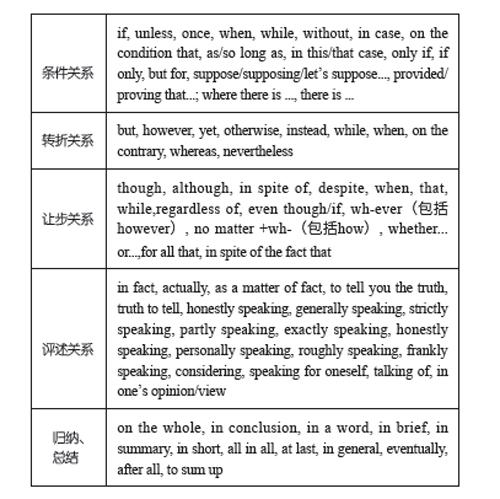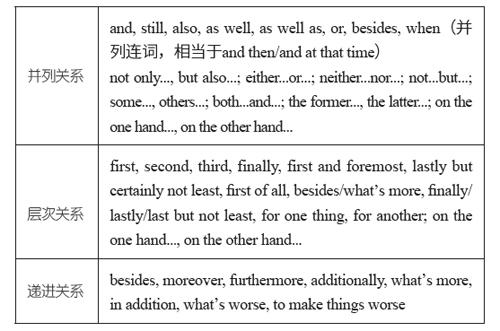提纲挈领寻主句,凝练转换成华章
2021-04-08杨春吉
杨春吉


为深化考试内容改革,高考英语综合写作题型在高考综合改革试点省份首先使用。新题型包括两种形式:概要写作和读后续写。概要写作是2016年浙江省高考英语首次采用的书面表达新题型,该题型旨在考查考生的概括文章主旨大意能力、精准获取关键词能力、重构主要信息能力以及灵活创新的表达能力。
概要写作把阅读理解和书面表达有机结合起来,要求考生运用语篇的相关信息,进行控制性写作。概要写作与常规写作所不同的是:考生作品的相关信息要从目标语篇中汲取,通过提取、浓缩、精炼、创新、整合等手段,速成一篇60词左右,同时符合其他写作要求的短文。
概要写作把考生作品用语的精炼性、语言知识的准确性及高级性、语篇结构的衔接性提到了新高度,是对考生写作水平的新挑战。考生作品常见的错误主要有对文章大意把握不到位;抓不住文章重点;句式、句型转换不当;替换词运用不当;衔接词运用失误;篇幅太长,等等。究其原因,考生主要是在解题技巧、英语知识的积累运用等方面存在不足。本文拟从六个方面谈谈概要写作的提分技巧,希望对同学们有所帮助。
一、提纲挈领,确定语篇主题句
这是解题的首要环节。一篇英语短文,不论是说明文、议论文、夹叙夹议文,还是记叙文,作者在构思、写作时总是先围绕一个主题,然后运用写作提纲,逐步充实,使其丰盈成文。因此,考生首先要快速浏览全文,掌握文章大意。然后找出短文的主题句及每段的分主题句。主题句一般位于篇首或篇末,分主题句一般散布于各段落的段首,便于读者阅读和理解文意。此外,诸如so、thus、therefore、however之类的信息标志词,它们后面的句子往往是作者对前文的总结、概括或引出话题中心,很可能也是主题句。考生只要抓准了主题句,也就大致确定了概要写作的要点和框架,为下一步写作奠定必要的概要基础。以2019年浙江卷为例,下文黑体部分即为语篇的主/分题句。
Parents everywhere always praise their kids. Jenn Berman, author of The A to Z Guide to Raising Happy and Confident Kids, says,“Weve gone to the opposite extreme of a few decades ago when parents tended to be more strict.” By giving kids a lot of praise, parents think theyre building their childrens confidence, when, in fact, it may be just the opposite. Too much praise can backfire and, when given in a way thats insincere, make kids afraid to try new things or take a risk for fear of not being able to stay on top where their parents praise has put them.
Still, dont go too far in the other direction. Not giving enough praise can be just as damaging as giving too much. Kids will feel like theyre not good enough or that you dont care and, as a result, may see no point in trying hard for their accomplishments.
So what is the right amount of praise? Experts say that the quality of praise is more important than the quantity. If praise is sincere and focused on the effort not the outcome, you can give it as often as your child does something that deserves a verbal reward. “We should especially recognize our childrens efforts to push themselves and work hard to achieve a goal,” says Donahue, author of Parenting Without Fear: Letting Go of Worry and Focusing on What Really Matters.“ One thing to remember is that its the process not the end product that matters.”
Your son may not be the best basketball player on his team. But if hes out there every day and playing hard, you should praise his effort regardless of whether his team wins or loses. Praising the effort and not the outcome can also mean recognizing your child when she has worked hard to clean the yard, cook dinner, or finish a book report. But whatever it is, praise should be given on a case-by-case basis and be proportionate (相稱的) to the amount of effort your child has put into it.
二、结合段落主题句,厘清段落之间的关系
这篇文章的总主题句比较难以确定,原因是外文作者在构思、行文、阐述观点时与中国人有所不同。加之生词较多,阻碍了考生对段落主题句的理解和把握。通过仔细理解后,我们确定各段落主题句为:
1.Parents everywhere always praise their kids. (启)
① when, in fact, it may be just the opposite.(分)
② Still, dont go too far in the other direction.(分)
2.Experts say that the quality of praise is more important than the quantity.(转)
3.But whatever it is, praise should be given on a case-by-case basis and be proportionate (相称的) to the amount of effort your child has put into it.(总)
通过理解分析上述各段落主题句的关系可推断出:第一句从数量过多和数量不够两个方面说明“不恰当表扬孩子”的坏处。第二句阐述的是专家的观点,进而引出作者的观点。第三句话综述上文,阐述了作者自己的观点。通过分析,我们可以确定短文的脉络架构关系为:启(①②)——转(2)——总(3)式。
厘清段落之间的关系是进行提炼、浓缩写作信息的前提,同时为下一步概要写作确定写作基调。
三、凝练主题句,确定关键词(组)
在确定好主题句,厘清各段落之间的关系后,考生要依此提炼出每段的关键词(组)。关键词(组)是本段大意的浓缩和简化。每个要点都要围绕关键词(组)展开。凝练关键词考查考生深层次的信息概括及整合能力。
第一段:overpraise
第二段:inadequate praise
第三段:the effort is more important than the result
第四段:Parents praise should have something in speech and match the effort of their children.
四、运用“变式”表达手法,改写要点句
《考试要求》中对概要写作的阅卷要求之一是考生应用语法结构和词汇的准确性。这就要求考生用自己的语言进行改写。同时,时态、语态、语法、词汇等要准确无误。大致可以从以下三个方面进行转换、改写。
1.语态转换
主要指根据字数需要把主动句转换为被动句或者把被动句转换为主动句。转换时,考生要注意四点:同义转换;时态正确;形式多样;简短为宜。如:短文最后一句“But whatever it is, praise should be given on a case-by-case basis and be proportionate (相稱的) to the amount of effort your child has put into it.”可以转换为主动句“parents should be aware that praise needs to be task-specific and match the amount of efforts of their children have made.”。
2.句型转换
英语中有许多高级、实用的句型,如it句型、there be句型、名词性从句句型,等等。考生若运用合理,不仅能“简化”篇章,省词约句,行文整齐划一,整体感强,而且还凸显出考生雄厚的写作功底,值得阅卷教师“点赞”。如“when, in fact, it may be just the opposite.”的前后句根据句意可改写为which引导的非限制性定语从句“Nowadays parents tend to overpraise their children, which may have bad effects.”。而“Experts say that the quality of praise is more important than the quantity. ”可以改写为“Experts suggest that parents pay their attention to the quality of their praise and focus on the efforts rather than the result.”。
3.词汇转换
对于“关键词”的转化和改写可以采用以下方法:
(1)同义词法:考生可以根据文/段意、结合关键词的词义及用法,用同义词(必要时也可用近义词)进行“同源”替换。如:too much praise →overpraise。
(2)同义词组/句法:考生若从记忆中搜寻找不到相关的同义词(或近义词),此时,可以转用同义(或近义)词组、短语,甚至是句子、句型。转换时要正确使用,符合逻辑。如第二段可以转换为:Inadequate praise can be equally harmful.
五、巧用结构词(组),衔接成文
麻雀虽小,五脏俱全。尽管你速成的是一篇60词左右的短文,也要运用高级表达,使作品结构合理,浑然一体。文后答案中就运用了however...,in fact...,all in all...等结构词,使上下文紧密结合,环环相扣,流畅合理。
“结构词(组)”是文章的“筋骨”和“桥梁”,是句与句、段与段之间的“黏合剂”。根据句意或上下文、前后段关系巧妙运用“过渡词(组)”,使语句顺理成章,逻辑严谨;篇章层次井然,浑然一体。尤其是议论文的写作,考生依据论点、结合论据进行逐层论证时,关联词是必不可少的,否则会给人一种杂乱无章的感觉。高考阅卷教师在阅卷时非常注重这一点。同学们在备考训练时一定要落实相应体裁的写作规范,形成模式,养成习惯,这样才能出手有范,行文有序,写出高水平作文。以下列举部分关联词:
并列关系 and, still, also, as well, as well as, or, besides, when(并列连词,相当于and then/and at that time)
not only..., but also...; either...or...; neither...nor...; not...but...; some..., others...; both...and...; the former..., the latter...; on the one hand..., on the other hand...
层次关系 first, second, third, finally, first and foremost, lastly but certainly not least, first of all, besides/whats more, finally/lastly/last but not least, for one thing, for another; on the one hand..., on the other hand...
递进关系 besides, moreover, furthermore, additionally, whats more, in addition, whats worse, to make things worse
条件关系 if, unless, once, when, while, without, in case, on the condition that, as/so long as, in this/that case, only if, if only, but for, suppose/supposing/lets suppose..., provided/proving that...; where there is ..., there is ...
转折关系 but, however, yet, otherwise, instead, while, when, on the contrary, whereas, nevertheless
让步关系 though, although, in spite of, despite, when, that, while,regardless of, even though/if, wh-ever(包括however), no matter +wh-(包括how), whether... or...,for all that, in spite of the fact that
评述关系 in fact, actually, as a matter of fact, to tell you the truth, truth to tell, honestly speaking, generally speaking, strictly speaking, partly speaking, exactly speaking, honestly speaking, personally speaking, roughly speaking, frankly speaking, considering, speaking for oneself, talking of, in ones opinion/view 归纳、
总结 on the whole, in conclusion, in a word, in brief, in summary, in short, all in all, at last, in general, eventually, after all, to sum up
六、全方位檢查
考生在写作时,最好要先打草稿。在打完草稿后,考生可以从以下几个角度进行全方位检查,检查、润色无误后再规范、认真地抄在答题纸上。
1.你的作品是否紧扣了文章的主题?
2.关键句是否用“变式”手法改写了?改写得是否符合文义?
3.“结构词/组”的使用是否恰当?是否正确表达了“上下文”的结构关系?
4.同义转换时,高级表达的运用是否恰当?
5.作品的词数是否合理(以60词左右为宜)?
2019年浙江卷概要写作参考答案:
Nowadays parents tend to overpraise their children,which may have bad effects. However, inadequate praise can be equally harmful. In fact, experts suggest that parents pay their attention to the quality of their praise and focus on the efforts rather than the result. All in all, parents should be aware that praise needs to be task-specific and match the amount of efforts of their children have made. (66 words)
对于概要写作题,考生要想达到提分目的,除了掌握上述解题技巧,备考期间还要进行英语语法知识的积累、词汇知识的积淀、“变式”表达法的拓展,等等。同时考生还要进行足量的考前模拟训练,领悟题型特点,掌握解题规律,把握提分技巧。若做好上述诸项,高分作文非你莫属!
